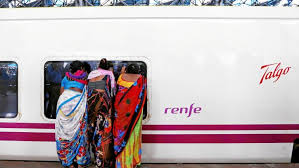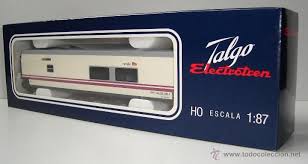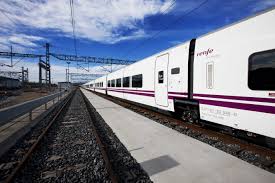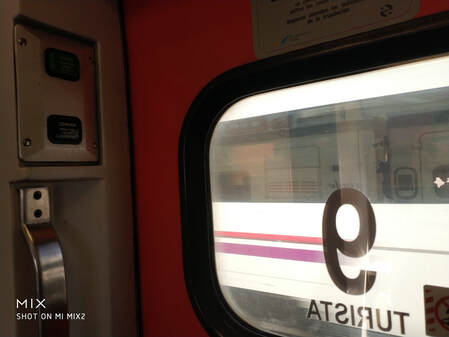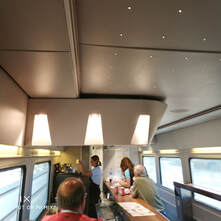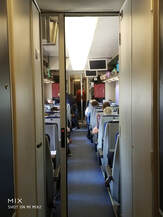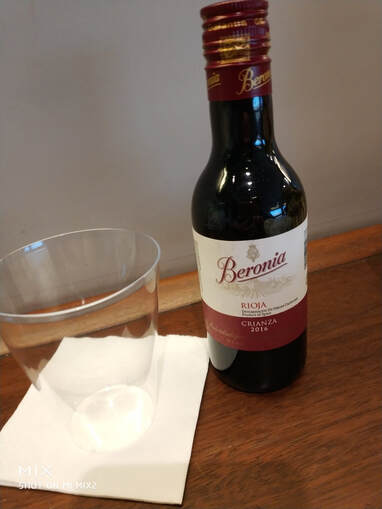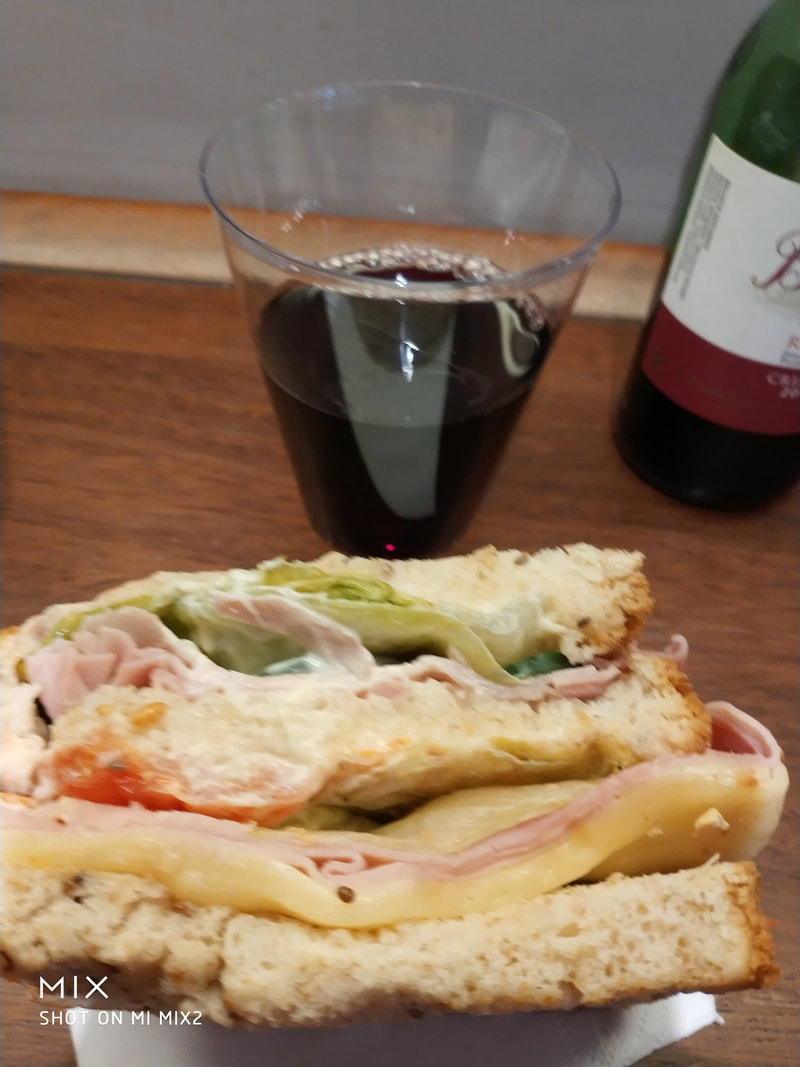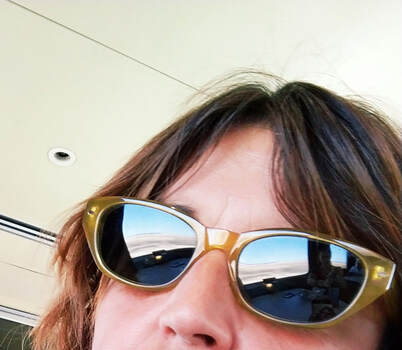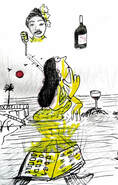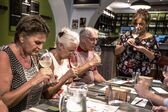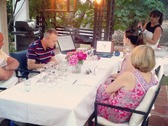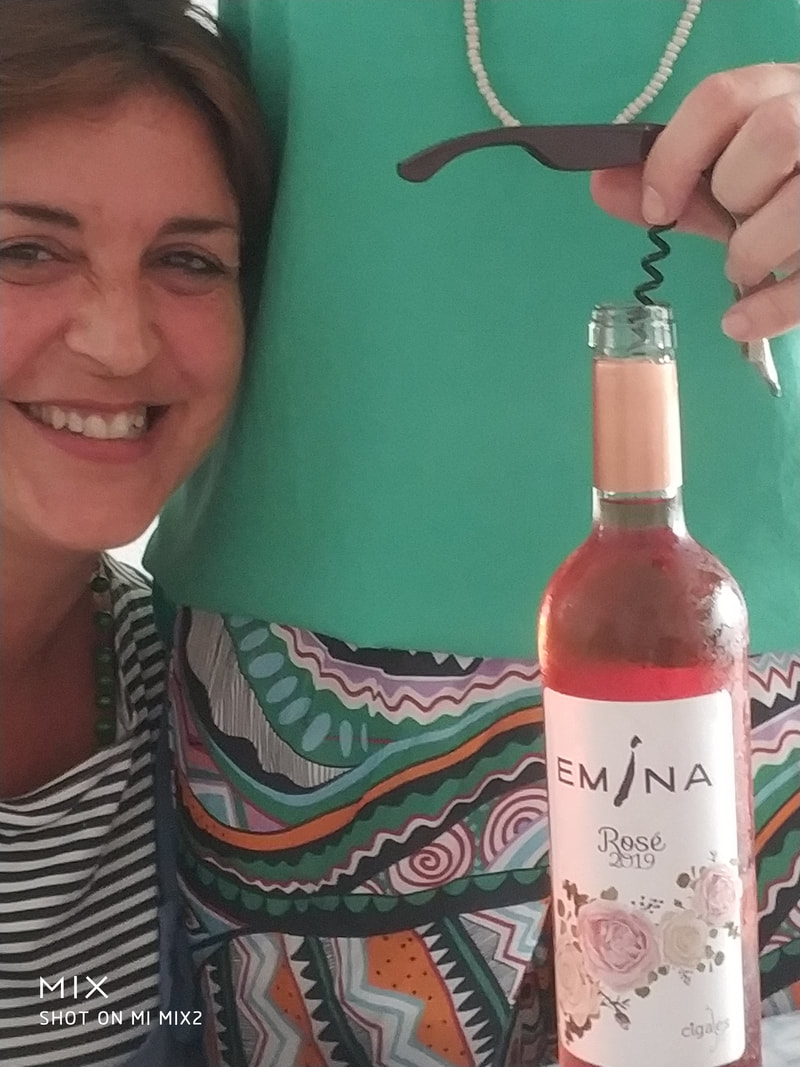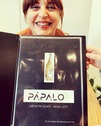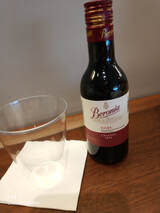 My Encounters with Wine, moves to the cafeteria car of the train. It is an idea that haunted my head for a while and at the suggestion of a great friend, so this time and taking advantage of a tedious and endless train ride for family visit, I got to it...After riding five cars from my seat, I arrived at the cafeteria car-bar. I asked about the availability of wines, my surprise was that they only had red, in Benjamin format bottle, which is equivalent 1/4 to standard bottle. I could not choose, was Beronia crianza 2016, with D. O. Rioja. I asked for white wine and they were out of stock. Its price, 3.60 euros. 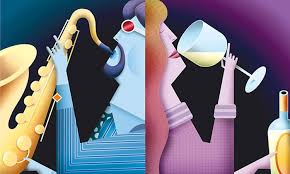 It seems that Renfe, at least on long-distance trains like this Talgo, does not bet, not cares for the subject of catering service, nor many others... I proceed to the opening of a screw-cap and serve it in a plastic glass. Its colour surprises me, because its garnet-clean with a fairly high robe was not within my expectations. I accompanied it with a triple sandwich, half vegetable and half mixed, which I appreciated, because the temperature of the wine along with the plastic, caused a twinge in my stomach. With aromas, I managed to get nothing but the aging of the wine, sorry, and on the palate, structured and (background)high-roast) In this case, the meaning and origin of the word CATA (tasting), which comes from Latin captare, which means to,” to grab”, just set me up! Since the rattle of the train, it forces you to do it... hahaha This has been my humble and optimistic version of events. I encourage you to taste our excellent broths in different means of transport, perhaps, a demand for it, would give us more alternatives! CURIOSITIES: I'll talk a little about the aroma of coffee or roasted in wine : The legend of the origin of coffee is curiously reminiscent of that of wine, Some Yemeni monks would have verified an unusual excitement among their goats and they would have noticed that they ate the fruits of an unknown shrub, so the monks tasted these fruits... The Jewish legends say that Noah would have discovered the wine in the same way and its effects, observing the strange behavior of a goat intoxicated by fermented grapes. Coffee is probably native to Ethiopia but its cultivation spread throughout numerous tropical and equatorial countries, especially Central and South America. The aroma of coffee comprises more than 850 components, among which furfurfurilmercaptan (Furan-2-ilmetanotiol is an organic compound containing a furan substituted with a sulfanymethyl group. It is a clear, colourless liquid when pure, but turns yellow when standing for a long time. It has a strong smell of roasted coffee and a bitter taste) has an important role. This scent of wine resembles, like cocoa, all the nuances called roasting and its presence seems similarly linked to the aging in new barrels and the warming that they undergo during the willow ... OBSERVATIONS: It is not the same to drink a glass wine in a high-end glass than to make it in a plastic glass ... To realize it is not necessary to be understood or stretched ... simply do a simple test, pouring the liquid in two different cup formats, you'll see that even the water knows otherwise. With wine, a liquid element full of aromas and flavours that you want to enjoy, it happens the same, so the glass takes on special importance if what you like is not just drinking the wine, but enjoying it. These should be the correct characteristics of a good glass: Transparency. The glass has to be neutral, not distort colours that we may want to appreciate, especially if we drink rosés or wines with years of aging in the bottle. The shape is the most important after the material, which preferably has to be glass, since according to the silhouette of the glass, aromas can be concentrated better than others. For example, narrow glasses, usually, are not good for poking your nose and start perceiving fruit or spices. Depending on the shape of the cup and especially its upper part, its opening, it will "throw" the wine to one part or another of the mouth, and depending on that "geographical" area, you will be able to perceive the sweet, the bitter, the saline ... A narrower cup, for example, throws the wine to the tip of the tongue, stimulating the sweet perception. If it is wider, the liquid goes further back and excites other areas and different taste buds.
0 Comentarios
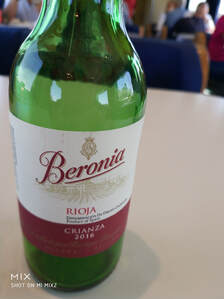 Mis Encuentros con el Vino, se desplaza al vagón cafetería del tren. Es una idea que rondaba mi cabecita desde hace un tiempo y por sugerencia de una gran amiga, así que en esta ocasión y aprovechando un tedioso e interminable viaje en tren para visita familiar, me puse a ello…Tras recorrer cinco vagones a duras penas desde mi asiento, llegué a la barra del vagón cafetería. Pregunté por la disponibilidad de vinos, mi sorpresa fue que solamente tenían tinto, en botella de formato Benjamín, que equivale a ¼ de botella estándar. No pude elegir, era Beronia crianza de 2016, con D. O. Rioja. Pregunté por vino blanco y no tenían existencias. Su precio/ botellita es de 3,60€. Parece que Renfe, por lo menos en trenes de largo recorrido como este Talgo, no apuesta, ni cuida el tema de servicio de restauración, ni muchos otros… Procedo a la apertura de tapón de rosca y me lo sirvo en un vaso de plástico. Su color me sorprende, pues su granate-limpio con una capa bastante alta, no estaba dentro de mis expectativas. Lo acompañé con un sándwich triple, mitad vegetal y mitad mixto, cosa que agradecí, pues la temperatura del vino junto con el plástico, causó una punzada en mi estómago. De aromas, no conseguí sacar nada más que la crianza del vino, lo siento, y en paladar, percibí que estaba bien estructurado y un fondo torrefacto. En este caso, el significado y origen de la palabra CATA, que viene del latín captare, que significa «coger, agarrar», no puede venir más a huevo! Ya que el traqueteo del tren, te obliga a ello...jejeje. Esta ha sido mi humilde y optimista versión de los hechos. Os animo a poder saborear nuestros excelentes caldos en diferentes medios de transporte, quizá así, una demanda de ello, nos daría más alternativas! CURIOSIDADES : Hablaré un poco del aroma a café o torrefacto en el vino : La leyenda del origen del café recuerda curiosamente a la del vino. Unos monjes yemenitas habrían constatado una excitación inhabitual entre sus cabras y se habrían dado cuenta de que comían los frutos de un arbusto desconocido, entonces ellos probaron estos frutos... Las leyendas judías cuentan que Noé habría descubierto de la misma manera el vino y sus efectos, observando el extraño comportamiento de una cabra embriagada por unas uvas fermentadas. El café es probablemente originario de Etiopía pero su cultivo se extendió por numerosos países tropicales y ecuatoriales, especialmente América Central y América del Sur. El aroma del café comprende más de 850 componentes, entre los cuales el furfurilmercaptan (Furan-2-ilmetanotiol es un compuesto orgánico que contiene un furano sustituido con un grupo sulfanilmetilo. Es un líquido transparente e incoloro cuando está puro, pero se vuelve de color amarillo al permanecer de pie por un tiempo prolongado. Posee un fuerte olor a café tostado y un sabor amargo) tiene un papel importante. Ese perfume del vino se parece, como el cacao, a todos los matices llamados de torrefacción y su presencia parece igualmente ligada a la crianza en barricas nuevas y al calentamiento que sufren durante el cimbreo... OBSERVACIONES :
No es lo mismo tomarse un vino en una copa de cristal de alta gama que hacerlo en un vaso de plástico... Para darse cuenta no hace falta ser un entendido o u estirado...simplemente haz una prueba sencilla, vertiendo el liquido en dos formatos de copa diferentes, verás que hasta el agua sabe de otra forma. Con el vino, un elemento líquido cargado de aromas y sabores que apetece disfrutar, pasa igual, por lo que la copa cobra una especial importancia si a ti lo que te gusta no es solo beberte el vino, sino disfrutarlo. Estas deberían ser las características correctas de una buena copa : Transparencia. El cristal tiene que ser neutro, no distorsionar colores que nos puede apetecer apreciar, sobre todo si bebemos rosados o vinos con años de crianza en botella. La forma es lo más importante después del material, que preferiblemente ha de ser cristal, ya que según la silueta de la copa, se pueden concentrar unos aromas mejor que otros. Por ejemplo, copas estrechas, por lo general, no son buenas para meter la nariz y empezar a percibir fruta o especias. Según sea la forma de la copa y sobre todo su parte superior, su abertura, ésta “lanzará” el vino a una parte u otra de la boca, y según sea esa zona “geográfica”, podrás percibir antes el dulce, el amargo, el salino… Una copa más estrecha, por ejemplo, lanza el vino a la punta de la lengua, estimulando la percepción dulce. Si es más ancha, el líquido va más atrás y excita otras zonas y papilas gustativas distintas. |
irene sayasEntusiasta y conocedora de la magia del vino. El vino evoca, convoca y provoca... *Archivos:
|
Cómo contactarnos / How to contact usTeléfono 690 073 871 |
Suscribirse / SubscribeÚnete a nuestra lista de correo hoy!
Sign up to our mailing list now! |

